
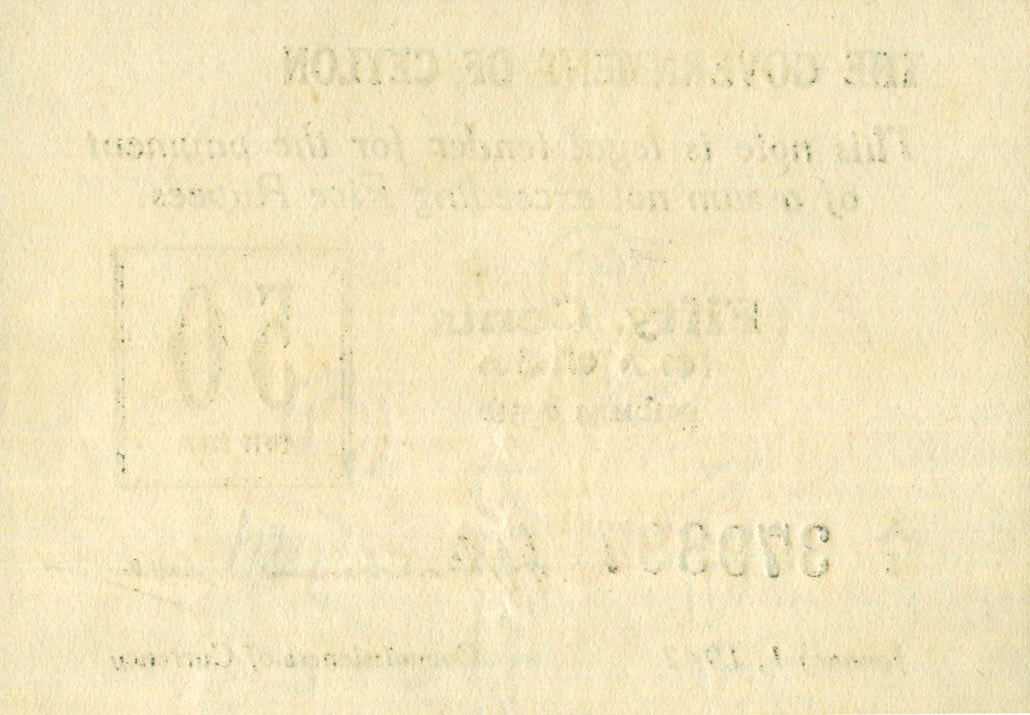
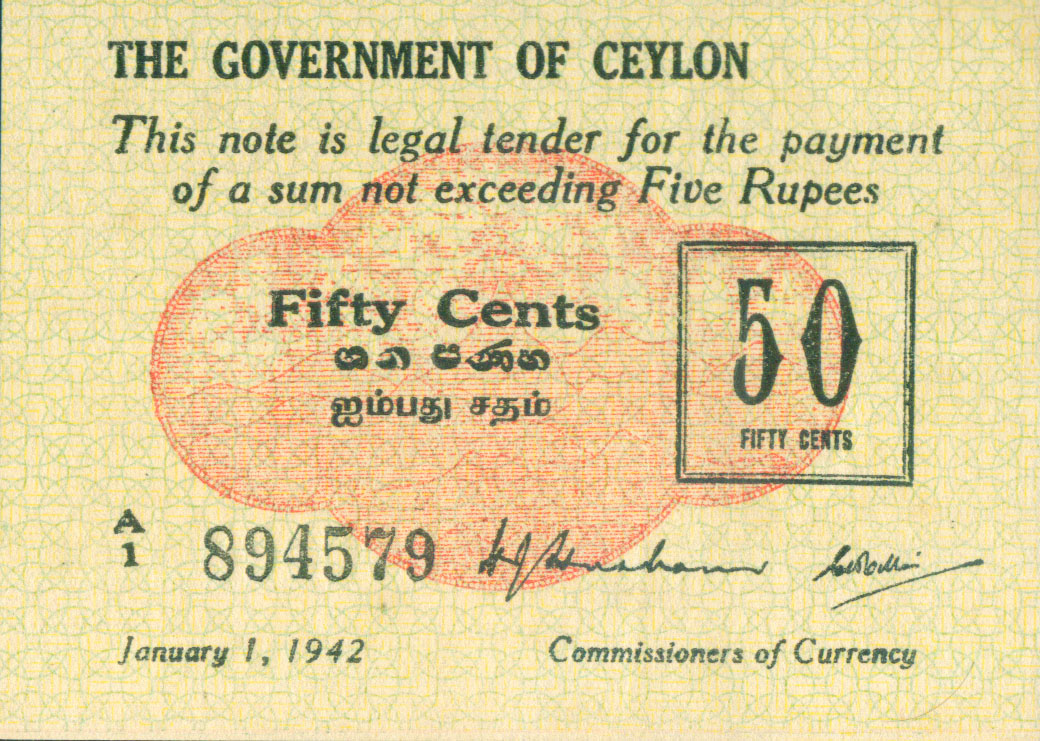
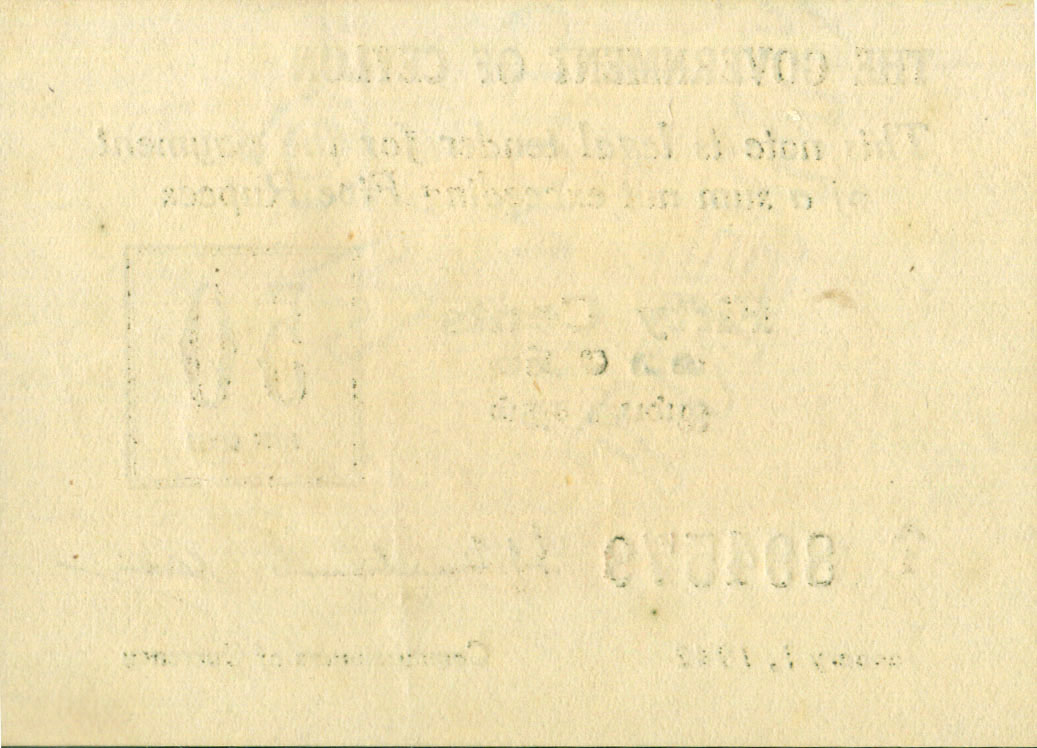

| 
|

| 
|
| LK:SCWPM #041 | |
 The Notes are 89 by 64 mm i.e. 3 1/2 by 2 1/2 inches.
The Notes are 89 by 64 mm i.e. 3 1/2 by 2 1/2 inches.
Printed by Ceylon Government Press.
Water-mark : The left or right half (approximate) of a water-mark which has
word RESTRICTION in a line in middle with CEYLON GOVERNMENT
in two arcs above and below forming an ellipse.
Front : Green floral background. Red Under-print motif has
silhouette of mountain Range centered with SiriPada within region made
up of a large (36mm) central circle with two smaller(24mm) circles
centered at 3 an 9 O'clock on rim.
In Black Text the words Fifty Cents in English,
ශත පණහ in Sinhala, and
ஐம்பது சதம் in Thamil
in three lines.
The Numerical value 50 with Fifty Cents in text
below within double line box on right. THE GOVERNMENT OF CEYLON
on upper left in one line. Just below the words in 2 lines
This note is legal tender for the payment of a sum not exceeding Five Rupees.
Below Serial number on left and 2 signatures H. J. Huxham &
C. H. Collins with Commissioners of Currency below on right.
Date January 1, 1942 on left.
Back : Blank
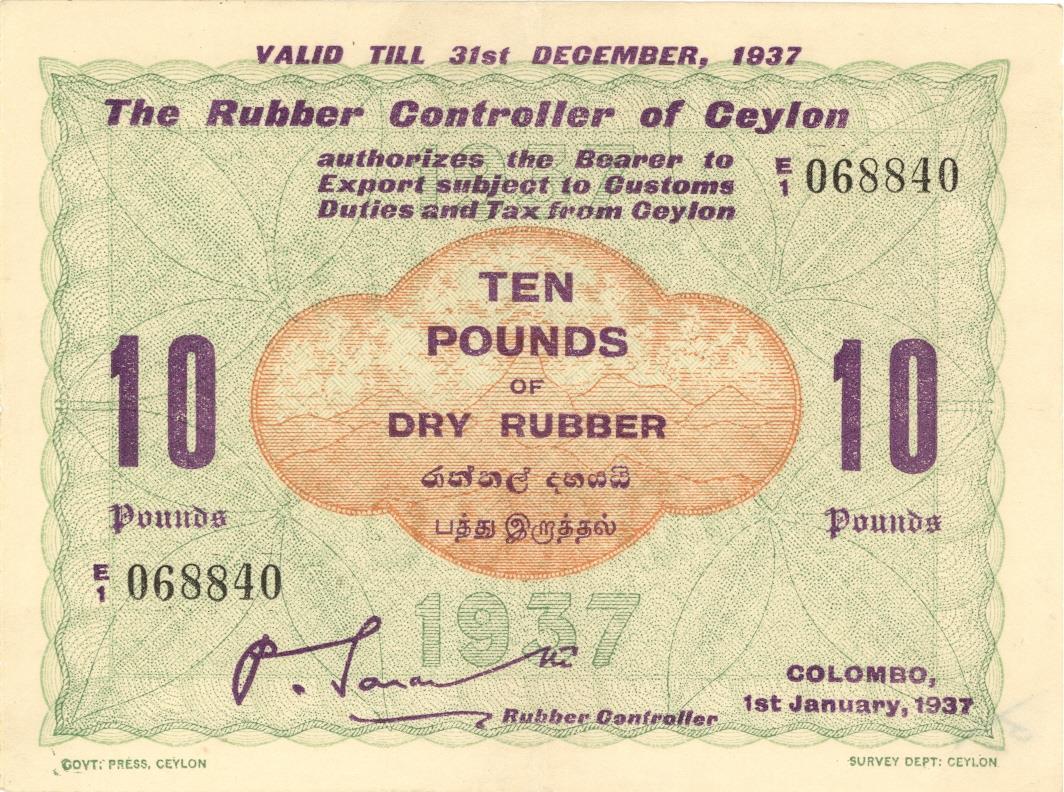 The Notes printed on one-side of Ceylon Government Security paper
used to print Coupons for Tea and Rubber Export Controller of Ceylon.
The Notes printed on one-side of Ceylon Government Security paper
used to print Coupons for Tea and Rubber Export Controller of Ceylon.
The Tea coupons,
the 1941 Final issue coupons
and the 1942 1st Advanced issue coupons
use the watermark that appears on these Emergency Currency Notes.
The red underprint is like the central motif in 1937 and 1938 Rubber
coupons drawn at the Survey Department in Ceylon.
| Date on BankNote | Signatures of Commissioners of Currency | First Serial # | Mintage in K | |
| January 1, 1942 | 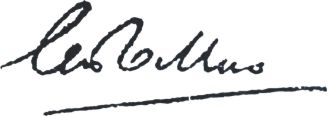
| A/1 000001 | 2060 | |
| H. J. Huxham | C. H. Collins | |||
According to Sri Lanka Currency of Recent Times 1938-1985 by T. M. U. Sallay, published in 1986 Colombo:Central Bank of Sri Lanka 99,496 of these notes (4.83%) remain unsurrendered. Notes A/2 060001 - A/4 015200 (2955K) were printed but probably never issued as they are not mentioned in the demontisation notice of 1942 June 19th.
Note American style date used only on these locally printed notes.
All of these WWII fractional currency notes were only legal tender for payment of amounts less than Five Rupees. Maybe it was the lack of security features that made the Currency Board impose this limit.
The notes were scanned at 300 dpi and displayed at 50 dpi.
It is lot more rare than the 25c
note issued at same time.
A well circulated but very good condition note from WWII Ceylon was
first obtained from a shop in Kandy in 1999 December.
Many ordinary shops in Lanka would display demonetized notes under the
cashiers counter glass which they can sometimes be motivated to sell.
The two unc notes shown above which form the full watermark is from
the collection of Mr Leonard Konstz.